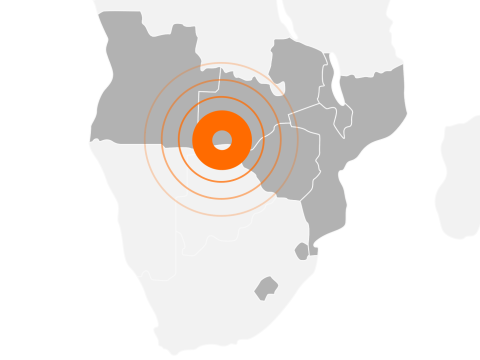Southern Africa Hunger Emergency Response
The cumulative and adverse effects of climate change: recurrent droughts, floods, cyclones have hit countries in Southern Africa particularly hard. Today, more than 11 million people are in urgent need of humanitarian assistance. Seven of the nine countries where World Vision operates in Southern Africa are affected to varying degrees.
Southern Africa Hunger Emergency Response
Southern Africa has increasingly experienced the negative effects of climate change in recent years. The impact today is severe and worsening, with recurrent droughts, floods and cyclones generating exponential growth in hunger, impacting livelihoods and the region’s broader efforts towards the Sustainable Development Goals (SDGs). As a result, more than 11 million people across the region are in urgent need of humanitarian assistance – more than 229,000 of these are registered in World Vision's sponsorship programme.
Seven of the nine countries where World Vision operates in Southern Africa are affected to varying degrees, with Angola, Zambia and Zimbabwe currently in greatest need of support.
The current level of hunger has been exacerbated by recurrent drought, floods and the recent cyclones which have destroyed crops across the major production belt of Mozambique, Malawi and Zimbabwe and enabled an environment for pests. In addition to the natural hazards, the region has also been plagued by weak economic growth underscored by poor fiscal management.
Our teams are working to respond to the urgent needs of the most vulnerable affected by the crisis including: child protection, the urgent treatment of malnutrition, prevention of diseases, food assistance, water, sanitation and hygiene (WASH) interventions with our goal of protecting children as the foundation of all we do.
The Situation on the Ground
11 Million
People facing hunger in Southern Africa
1 in 4
Children screened in Angola are malnourished.
Drought in Angola is Tearing Families Apart
Country Prioritisation based on need:
Worst Affected Countries: Angola, Zambia and Zimbabwe
Angola – has experienced consecutive failed seasons especially in the southern region that never fully recovered from the effects of the previous drought. Reports from southern Angola suggests malnutrition amongst children has been on the increase and malnutrition-related mortality has significantly increased. World Vision’s operations are predominantly in the south of the country where the most affected people are living. Studies conducted by our teams and the United Nations estimate that 8 percent (2.4 million people) are currently affected.
Zambia – Hunger is aggravated by unfavorable economic conditions influenced by poor macro-economic management. This has resulted in huge sums of debt to China and reportedly corruption that led to the suspension of foreign aid by donor partners. Reports suggest that more than 2.3 million people are estimated to be facing acute hunger. World Vision operates 16 Area Programs in the affected districts.
Zimbabwe– Poor environmental conditions have led to a 54 percent decrease in harvests from the previous year. The situation of food is aggravated by new laws which restrict the sale of maize (except to contractors using local currency). As a result, 5.5 million people are currently facing hunger and more than 5 percent of the population is facing Acute Malnutrition in 8 national districts.
Other Countries Affected: Eswatini, Lesotho, Malawi and Mozambique
Eswatini –Low rainfalls have led to inadequate or failed harvests. As a result, 26 percent of the population is currently facing hunger. Nearly half the affected population live in areas where World Vision is currently operating.
Lesotho – Severe environmental degradation has left much of the population chronically food insecure. The latest country Vulnerability Assessment and Analysis suggest that 30 percent of the population is exposed to serious hunger and that the situation will worsen during the lean season. World Vision's operational areas are amongst the affected districts in the country.
Malawi –Agricultural production for the 2017/18 growing season dropped by 24 percent, leaving more than 1.2 million people affected across the country. The Government suggests that there is adequate maize from the previous season within the country but lacks the resources to mobilise and deploy where it is most required. The Government has taken responsibility to distribute in-country stocks of maize and is requesting technical support from World Vision. The Government, however, does not have resources to purchase food items that are usually consumed with maize to provide adequate nutrition, such as pulses, oil, and salt.
Mozambique – After being devastated by Cyclones and failed harvests, 1.6 million people are in need of critical humanitarian assistance. World Vision operates in the most affected areas.
